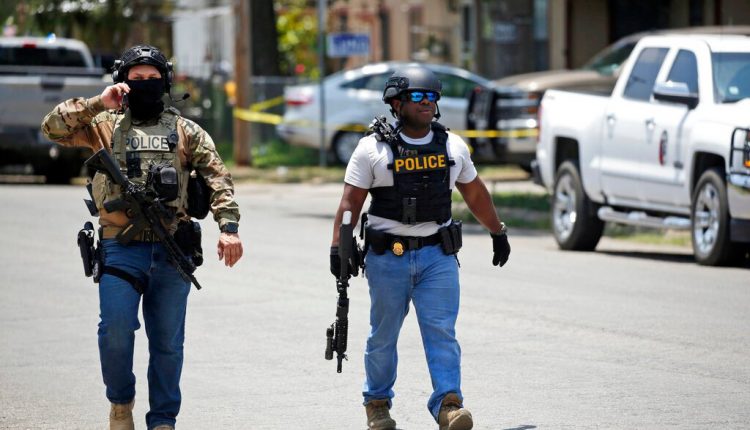
HOUSTON: A teenage gunman killed 18 young children in a shooting at an elementary school in Texas on Tuesday, in the deadliest US school shooting in years.
The attack in Uvalde, Texas — a small community about an hour from the Mexican border — is the latest in a spree of deadly shootings in America, where horror at the cycle of gun violence has failed to spur action to end it.
Texas governor Greg Abbott, addressing a news conference, said the 18-year-old gunman was believed to have shot his grandmother before heading to Robb Elementary School at around noon, abandoning his vehicle and entering with a handgun, and possibly also a rifle.
The governor said the suspect, whom he named as Salvador Ramos, a local resident and a US citizen, was also dead adding that “it is believed that responding officers killed him”.
“He shot and killed, horrifically and incomprehensibly,” Abbott said.
Texas state senator Roland Gutierrez told CNN that three adults had also died in the attack, though it was unclear if that toll included the shooter.
Footage showed small groups of children weaving through parked cars and yellow buses, some holding hands as they fled under police escort from the school, which teaches students aged around seven to 10 years old.
It was the deadliest such incident since the 2012 Sandy Hook shooting in Connecticut, in which 20 children and six staff were killed.
The White House ordered flags to be flown at half-staff in mourning for the victims — whose deaths sent a wave of shock through a country still scarred by the horror of Sandy Hook.
President Joe Biden has been briefed on the shooting and was to address the nation later on Tuesday.
Robb Elementary — which teaches more than 500, mostly Hispanic and economically disadvantaged students from second through fourth grade — called on parents not to pick up their children until all were accounted for.
“Students need to be accounted for before they are released to your care. You will be notified to pick up students once all are accounted for,” the school said on its website soon after the attack.
‘Happens nowhere else’
“Enough is enough,” said vice-president Kamala Harris in the wake of the tragedy. “Our hearts keep getting broken.
“We have to have the courage to take action.”
Ted Cruz, a pro-gun rights Republican senator from Texas, tweeted that he and his wife were “lifting up in prayer the children and families in the horrific shooting in Uvalde”.
But senator Chris Murphy, a Democrat from Connecticut, where the Sandy Hook shooting took place, made an impassioned appeal for concrete action to prevent further violence.
“This isn’t inevitable, these kids weren’t unlucky. This only happens in this country and nowhere else. Nowhere else do little kids go to school thinking that they might be shot that day,” Murphy said on the Senate floor in Washington.
“I’m here on this floor to beg, to literally get down on my hands and knees and beg my colleagues: Find a path forward here. Work with us to find a way to pass laws that make this less likely.”
The deadly assault in Texas follows a series of mass shootings in the US this month.
On May 14, an 18-year-old man shot 10 people dead at a Buffalo, New York grocery store.
Wearing heavy body armour and wielding an AR-15 rifle, the self-declared white supremacist livestreamed his attack, having reportedly targeted the store because of the large surrounding African American population.
The following day, a man blocked the door of a church in Laguna Woods, California and opened fire on its Taiwanese-American congregation, killing one person and injuring five.
Despite recurring mass-casualty shootings, multiple initiatives to reform gun regulations have failed in the US Congress, leaving states and local councils to strengthen — or weaken — their own restrictions.
The National Rifle Association has been instrumental in fighting against stricter US gun laws. Abbott and Cruz are listed as speakers at a forum that is being held by the powerful lobby in Houston, Texas later this week.
The US suffered 19,350 firearm homicides in 2020, up nearly 35% compared to 2019, the Centers for Disease Control and Prevention (CDC) said in its latest data.-AFP
